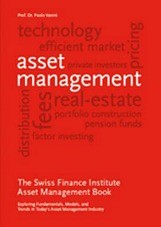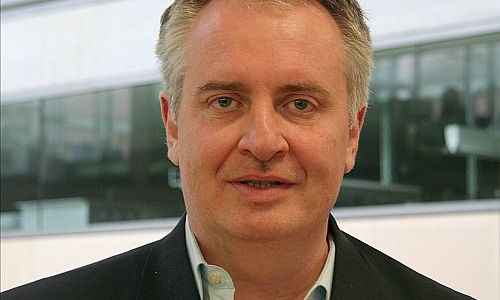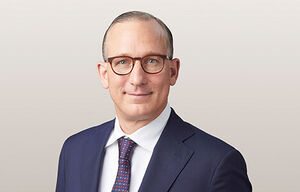The changes in Asset Management are about as complex as changing four wheels during a car trip – plus replacing the windscreen, finance professor Paolo Vanini says in an exclusive interview with finews.ch.
Mr. Vanini, Asset Management is experiencing a revolutionary change. What was it that triggered this transformation?
For me, there are actually five factors that triggered this transformation: technology, regulation, know-how of market participants, various trends, as well as new methods for the choice and allocation of individual asset classes.
What was different in the past?
Today, there is greater interdependence between the different areas. A successful implementation of regulations requires the application of the latest technologies. The question is whether the Asset Manager has got the necessary know-how for this.
In other words, due to the many technological and regulatory concerns, it has really become a side issue how an investor invests money?
Yes, that danger exists, even if the «how» remains the central issue for customers. If somebody like the British economist John Maynard Keynes (1883-1946) achieved more than 16 percent excess return on the stock market over nearly 20 years, merely with the help of a typewriter, his experience, and intelligence, digitalization is not required to read the market.
Nevertheless, technological developments cannot be wished away from today’s finance industry. How should go about using this technology in a meaningful and, above all, effective way?
In future, successful asset management firms and asset management departments in banks will be the ones that can best deal with all of the five above mentioned factors.
«On top of that, one will have to decide which wheels are to be produced in-house»
Figuratively, it won’t be about changing one wheel on a car trip, but changing all four – plus the windscreen. On top of that, the decision will have to be made which wheels are produced in-house and which parts of the added value can be passed on to new third party providers.
As speaker and moderator of the 5th Swiss Asset Management Day you recently focused on three topics: technology, investment methods, and alternative investments. What was actually presented?
In terms of technologies, the digitization of the value chain in asset management was the main subject. The focus lay on the customer-interface on one hand and on compliance on the other.
Various representatives from technologies, which are already marketable, revealed how digitization can create added value for customers in the investment business and how asset managers can handle the compliance challenges in an automated way without losing control over risks.
Do new investment methods really exist?
Yes. We focused on two approaches which, in Switzerland, are approaching a breakthrough with institutional investors: Factor investing and risk parity.
What does that mean?
Factor Investing allows for risks and returns of investments to be considered on the right aggregation level. Methodologically, this investment style has been known for decades.
The motivation is to generate consistent excess returns with liquid strategies whereby the strategies are preferably uncorrelated amongst themselves and with «the market». The implementation of this method in practice has in the past years made great progress in terms of transparency, costs and stable income return.
«The standard methods of portfolio-optimization have weak points»
With these characteristics, factor investing is a serious threat for many hedge funds. At the Swiss Asset Management Day, experts from large asset management companies presented their approaches and experiences and answered questions from the audience.
What is Risk Parity about?
The standard portfolio optimization methods have weak points, with the result that many market players do not apply them any longer. One weak point is the absence of results robustness, meaning that small input changes lead to inacceptable changes in the allocation. Another weakness is model risks for the estimation of expected returns. Risk parity avoids both weaknesses by excluding standard optimization and by only taking risk dimensions explicitly into consideration for the approach.
Why should alternative assets be attractive to institutional investors?
In the recent interest rate environment and in the face of large insecurities with respect to the stock and commodity markets, alternative assets are sought due to their mere weak correlation with traditional asset classes.
Alternative assets generally do not correlate with traditional asset classes, do they?
Hedge funds appear not to correlate. However, the financial crisis demonstrated that this was not true for many hedge funds. They were basically exposed to the equity exposure. This was one of the reasons for factor investing, in other words the search of strategies which are uncorrelated in «good and in bad times».
«Otherwise, the Roboadvisor will merely deliver old wine in new pipes»
At the Swiss Asset Management Day various experts critically appraised the three alternative asset classes ‹infrastructure›, ‹private equity›, and ‹insurance linked securities›. The high point was a big data application that maximizes the performance of hedge funds.
In the current Fintech euphoria, one key word, amongst other, is creating a lot of noise: Roboadvisor. What is your take on that?
The Roboadvisor can fulfill two purposes. Firstly, distribution costs can be lowered and scaled. These gains in efficiency are advantageous for asset management firms.
Secondly, investors can be strengthened by delivering qualitatively superior asset management. The basis for this is formed by a better understanding of the economy and of finance. Otherwise, the RoboAdvisor will merely deliver old wine in new pipes.
«As a warning therefore I would like to mention machine learning»
From a methodological point of view, we are not yet ready for a strengthening of the investor. As a warning therefore I would like to mention «Machine Learning», a big-data application that for the last 15 years has indeed been a successful scientific discipline, but the results of its application for investment strategies are still disappointing. Such topics without reliable practical testing were not presented at the Swiss Asset management Day.
Paolo Vanini is ‹Swiss Finance Institute Professor› as well as honorary professor at the University of Basel. In addition, he is Head of Distribution and Development of Structured Solutions at Zürcher Kantonalbank (ZKB) and is Vice President of the Swiss Structured Products Association. Vanini carries out comprehensive scientific analysis. He holds a PhD in Mathematics from the ETH Zurich.
 All participants at the 5th Swiss Asset Management Day received the Swiss Finance Institute’s new asset management book in which Paolo Vanini summarizes the current status of the five dimensions in asset management. The book also provides an overview of the most recent scientific insights into investment methods, trends, technologies, and demographics.
All participants at the 5th Swiss Asset Management Day received the Swiss Finance Institute’s new asset management book in which Paolo Vanini summarizes the current status of the five dimensions in asset management. The book also provides an overview of the most recent scientific insights into investment methods, trends, technologies, and demographics.















